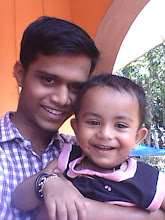DECISION MAKING PROCESS IN MANAGEMENT
THE DECISION MAKING PROCESS
- Awareness of problem
- Diagnosis and state the problem
- Develop the alternatives
- Evaluate the alternatives
- Select the best alternatives
- Implement and verify the decision
Awareness of a problem
n The
manager must become aware that a problem exists and that it is important enough
for managerial action
n Disparity
between what is and what should be
n Managers
must identify the gaps between the current and desired state of affairs
n The
emphasis should be on defining the questions in the right way
n There
may be multifarious caueses for an organizational problem
n Monitor
the decision making environment, understand the possible causes and try to
define the real problem carefully
Diagnosis and state the problem
n Once
aware of a problem, the manager must state the real problem
n He
must try to solve the problem not the symptoms
n What
is the problem?
n Which
problems to solve?
n What
is the real cause of the problem
n Critical
factor analysis
Develop the Alternatives
n The
statement of the problem enables executives to develop alternatives
n Developing
alternative solutions guarantees adequate focus and attention to the problem
n Creative
imagination are required to make sure that the best alternatives are considered
before a course of action is selected
n Divergent
thinking
n Flexible
mental framework
Evaluate the alternatives
n Decision
maker tries to outline the advantages and disadvantages of each alternative
n The
opportunity cost method is suggested to evaluate each alternative
n When
one alternative is selected in place of another, the cost of the selected one
is measured in terms of the benefits available from the rejected one
n The
strengths and weaknesses of each alternative is evaluated
Select the Best Alternative
n Selects
the alternative that will maximize the results in terms of existing objectives
Implement and verify the Decision
n Seek
feedback regarding the effectiveness of the implemented solutions
n Feedback
allows managers to become aware of the recent problems associated with the
solution
n Establish
follow up procedures to evaluate the decisions





0 comments:
Post a Comment